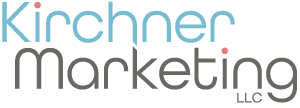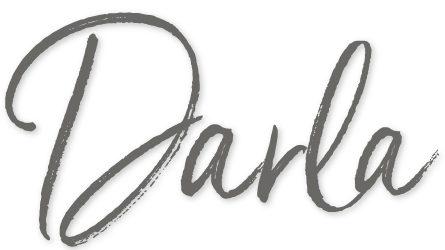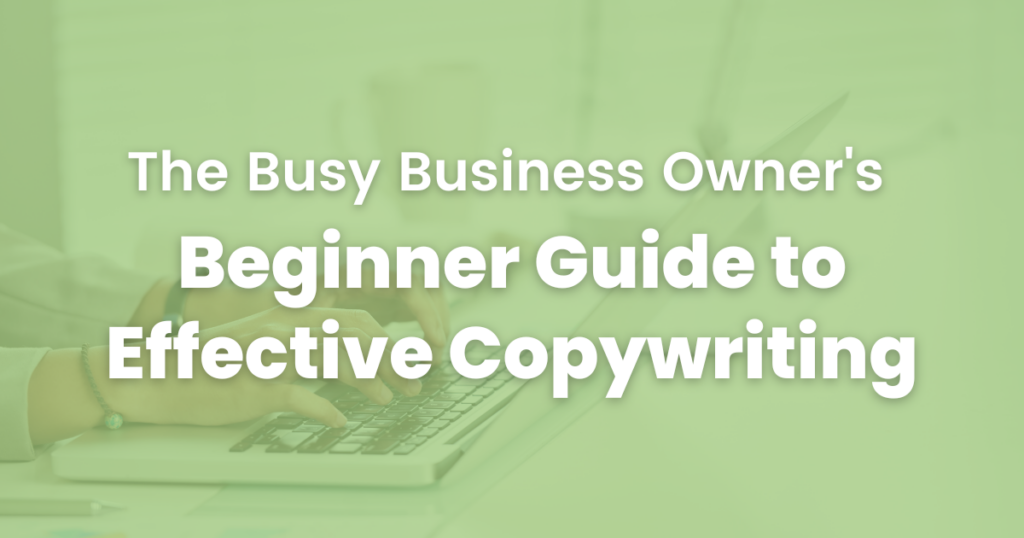
The Busy Business Owner’s Beginner Guide to Effective Copywriting
Unlock the Power of Copywriting to Boost Your Business
As a busy business owner, you have a million things on your plate, and copywriting is just one more item on your never-ending to-do list. But here's the thing: effective copywriting can make all the difference for your business. From the junk mail in your mailbox to the ads on your phone, compelling copy is everywhere, captivating your attention and pulling you in. So, let's dive into the world of copywriting and discover how it can work wonders for busy business owners like you.
What is Copywriting, Anyway?
Copywriting is the art and strategy of crafting engaging words for marketing purposes. Its purpose is to capture interest and spur action, whether buying a product, using a service, subscribing to a newsletter, or following a social media account. Think of those catchy slogans, compelling product descriptions, and enticing company emails that always manage to catch your eye—copywriting magic at work! It's a crucial tool for generating conversions and sales, employed across various mediums such as emails, websites, advertisements, and catalogs.
In essence, copywriting is about creating persuasive content, known as copy or sales copy, to boost brand visibility and motivate people to take specific actions.
The Secret Ingredient to Business Success: Effective Copywriting
Imagine you're at a social gathering, and someone starts pitching a product using fancy words that leave you overwhelmed and disinterested. Now, envision a different scenario where someone engages you with a compelling story about a product that can solve your problem, using clear, everyday language. Which one would captivate your attention? That's the charm of effective copywriting.
Great copywriting resonates with your audience, understanding their needs and demonstrating how your product or service can solve them. Skillful copywriting makes your brand relatable and trustworthy, leading to immediate sales and building long-lasting relationships with your audience, fostering loyalty and sustained growth.
So, never underestimate the power of good copywriting—it might just be the key to unlocking your business success.
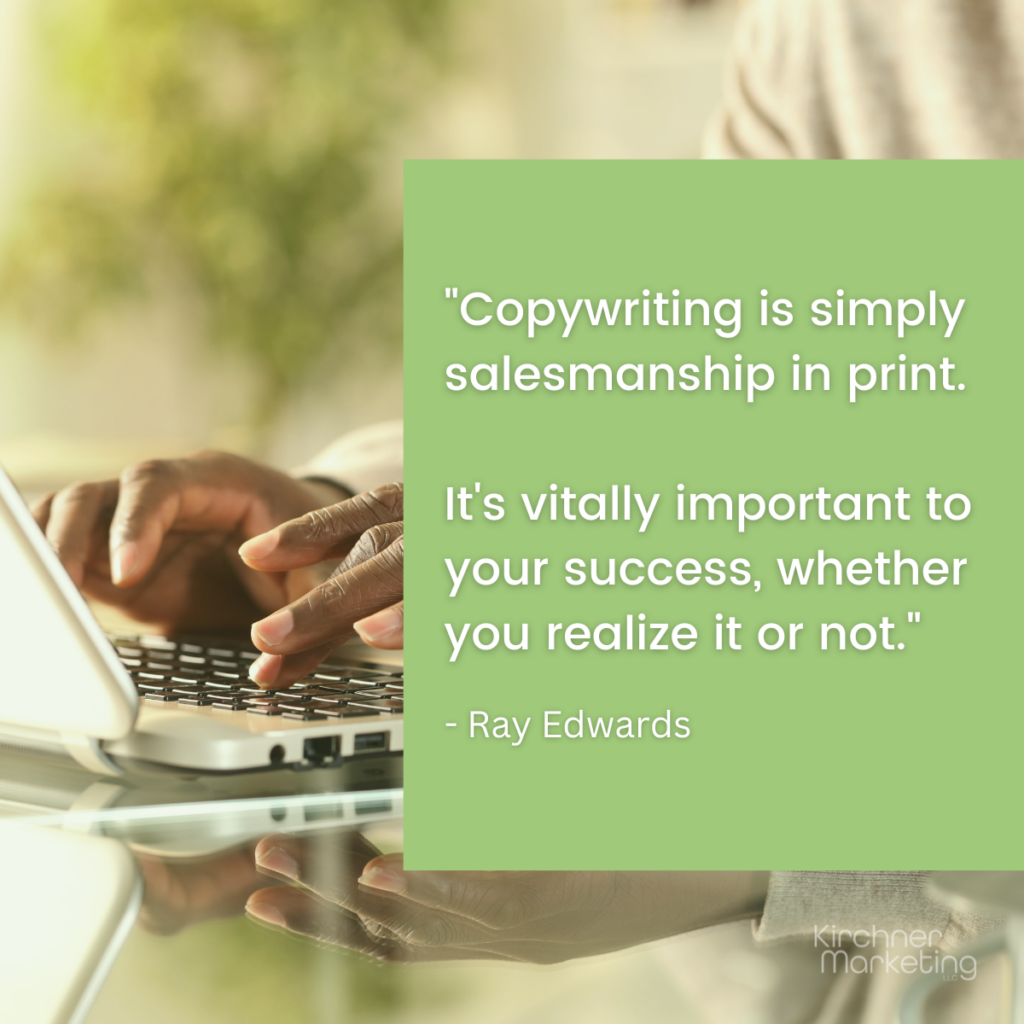
The Do's of Copywriting
Let's explore the essential "Do's" of copywriting that will turn your words from so-so into "Wow, tell me more!" These tricks will help you speak to your audience in a real, relatable way and effectively convey your message.
Keep it in Your Brand Voice:
Think of your brand as a person. How does it sound? Is it witty and funny, or straightforward and serious? Maybe it's conversational and friendly.
Whatever your brand voice is, it's essential to keep it consistent across all your copy to create a distinctive and recognizable identity. This is crucial for building brand recognition and loyalty among your audience.
For example:
Brands like Mailchimp, Ben and Jerry's, or Dollar Shave Club— their irreverent and humorous tone is a key part of their brand identity. Their unique voice sets them apart and makes their content instantly recognizable.
Ruler brands like American Express or Mayo Clinic will likely maintain a formal, authoritative tone in their copy to establish trust and credibility.
Think about brands like Target, State Farm, or Gap. Their copy is filled with everyday language, friendly advice, and a touch of humor, which makes their brand feel approachable and relatable.
The key is to keep your brand voice consistent. If your tone varies from one piece of content to another, it can confuse your audience and dilute your brand's personality. Your copy should sound like you. So write as you talk.
Master the Hook:
The first few lines of your copy are like the opening scene of a movie or the first bite of a meal—they set the tone and leave an initial impression that can make or break the entire experience. A compelling beginning is crucial in copywriting because it's your golden opportunity to hook your reader, spark their curiosity, and keep them engaged.
Here are a few tips for writing effective hooks:
-
- Start with a question: Asking a relevant question draws your reader in and gets them thinking.
- Use a powerful statement: Start with a bold or surprising statement to grab your reader's attention immediately.
- Tell a story: A short, relevant anecdote can create a personal connection with your reader.
- Present a problem: By starting with a problem your product or service can solve, you immediately make your copy relevant to your reader.
- Use interesting facts or statistics: If you have a surprising fact or statistic relevant to your copy, this can be a great way to hook your reader's interest.
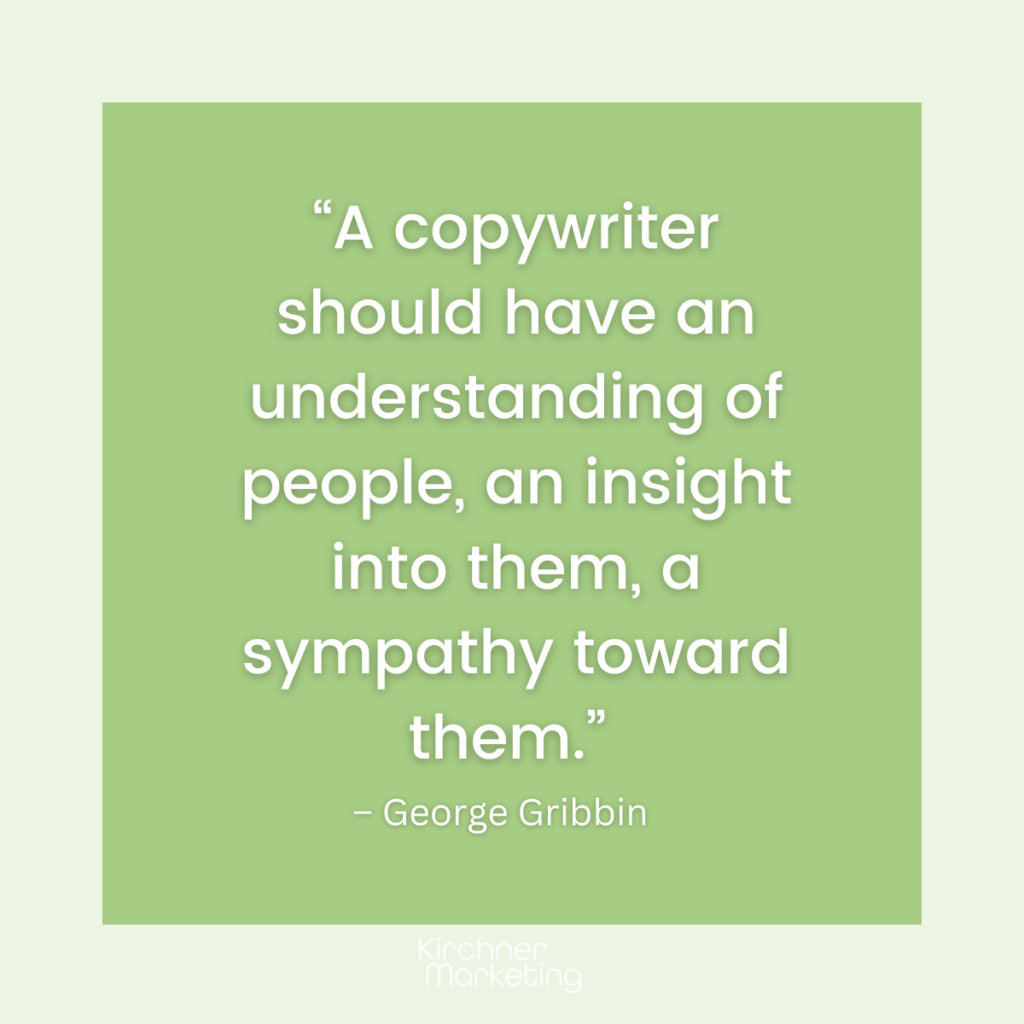
Stick to One Topic:
In the world of copywriting, sticking to one topic is crucial. Here's some advice to help you stay on track:
Nail Down Your Main Idea: Before you start writing, clearly understand what you want to say. Start with your big takeaway first, and make sure everything in your copy circles back to that.
Avoid Rabbit Holes: While sharing unrelated stories or anecdotes may be tempting, ask yourself if they serve your main idea. If not, save them for another time.
Revisit Your Point: Be bold and repeat your main idea in different ways throughout your copy. Weaving it in helps keep your reader on track and reinforces your message.
Wrap It Up Clearly: Your conclusion should tie everything back to your main point. Leave your reader with a clear understanding of what you've been talking about.
Writing to One Person: A One-to-One Approach to Copywriting
One of the most effective strategies in copywriting is writing as if you're speaking to a single person. This "one-to-one" approach amplifies the impact of your message and brings several benefits:
Increased Engagement: Personalizing your writing makes your readers more likely to engage with your content.
Building Relationships: When you craft your message for one person, you create a personal connection, giving them the impression that your words are tailor-made for them.
Persuasiveness: Addressing your reader's needs and worries makes your writing more persuasive.
Improved Clarity: Writing to one person enhances clarity in your content. You're less likely to digress or try to cover too much ground all at once.
Ease of Writing: Writing with a single person in mind feels more like a casual conversation, making writing more natural and less demanding.
Remember, although your audience may be extensive, each person reads your message individually. Writing one-to-one makes readers feel like you're directly communicating with them, boosting their connection to you or your brand. So, consider your copywriting as a friendly conversation with a single individual. Your content might reach thousands, but each person engages with it individually, not as part of a group.
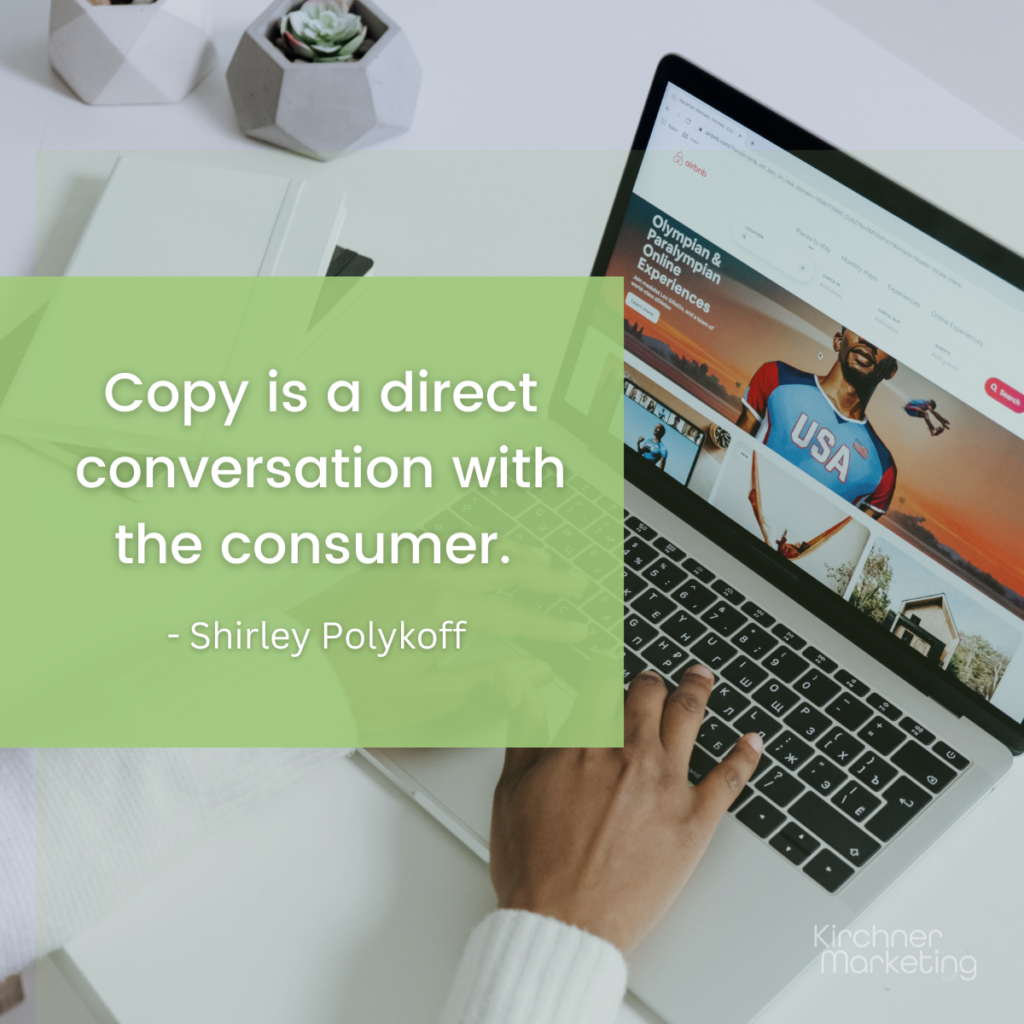
The Don'ts of Copywriting
While knowing what to do is essential, knowing what not to do is equally crucial in crafting compelling content. Here are some "Don'ts" to keep in mind:
Avoid Jargon
Clarity is paramount in copywriting. Remember that your readers may not be familiar with industry-specific language or jargon.
Simple language effectively engages readers and prevents confusion, allowing your message to resonate with a wider audience.
Don't Overwrite
Tempting as it may be to provide as much information as possible, simplicity and conciseness are vital in copywriting. Overwriting can lead to a loss of interest or confusion for the reader. The goal is to convey the message effectively in as few words as possible. Respect your reader's time and strive for brevity to build a positive relationship.
Avoid Sameness
Copywriting is an art, and it's important to vary sentence length and tone to keep your audience engaged. Short sentences can provide impact, while longer sentences can provide detail. Changing the style can cater to different emotions and maintain the reader's interest.
Remember the Call to Action
A call to action (CTA) is a prompt that guides the reader's next step or urges them to take action. Remember to keep your CTA direct and specific. Great calls to action include:
-
- Buy Now
- Schedule a Call
- Order Today
- Share your thoughts
Whether it's a direction to subscribe, purchase, read more, or book a call, the CTA is a critical component of compelling copy that directly affects conversions.
Watch Your Grammar
Credibility is critical in copywriting. Typos or grammatical errors can undermine this credibility, giving the impression of carelessness or unprofessionalism. Proofread meticulously to ensure your copy is error-free. I use tools like Grammarly or Hemingway Editor to assist with grammar. But nothing replaces a careful human review.
Final Words
Writing compelling copy is both an art and a science. It requires psychology, storytelling, and a deep understanding of your ideal client's wants and problems. It all starts with developing a clear and compelling brand story. The information above serves as a starting point, but the real secret lies in practice and improving and more practice.
Now it's your turn to put this knowledge into action. Remember, the right words can open doors, and the best part is that you have the power to craft them.
Book a call if you're too busy or ready to up-level your marketing and develop a clear brand story so your copywriting and marketing work for your business. Let's discuss your business needs and goals and how I can help you.
As we wrap up, remember that successful copywriting is not just about writing—it's about understanding your brand's personality and voice. The words you choose should reflect who you are as a brand and resonate with your target audience.
To write in your brand personality and voice, take our FREE Brand Personality Quiz! It's a fun, quick, and enlightening way to discover your top brand archetype personality. In just 5 minutes, you'll better understand your business's brand personality, values, and voice, enabling you to connect and communicate more effectively with your target audience.
But don't just take our word for it—see what Matt had to say: "Even the process of going through the quiz was revealing for us."
Cheers to more compelling copy and more customers!
Happy writing,
